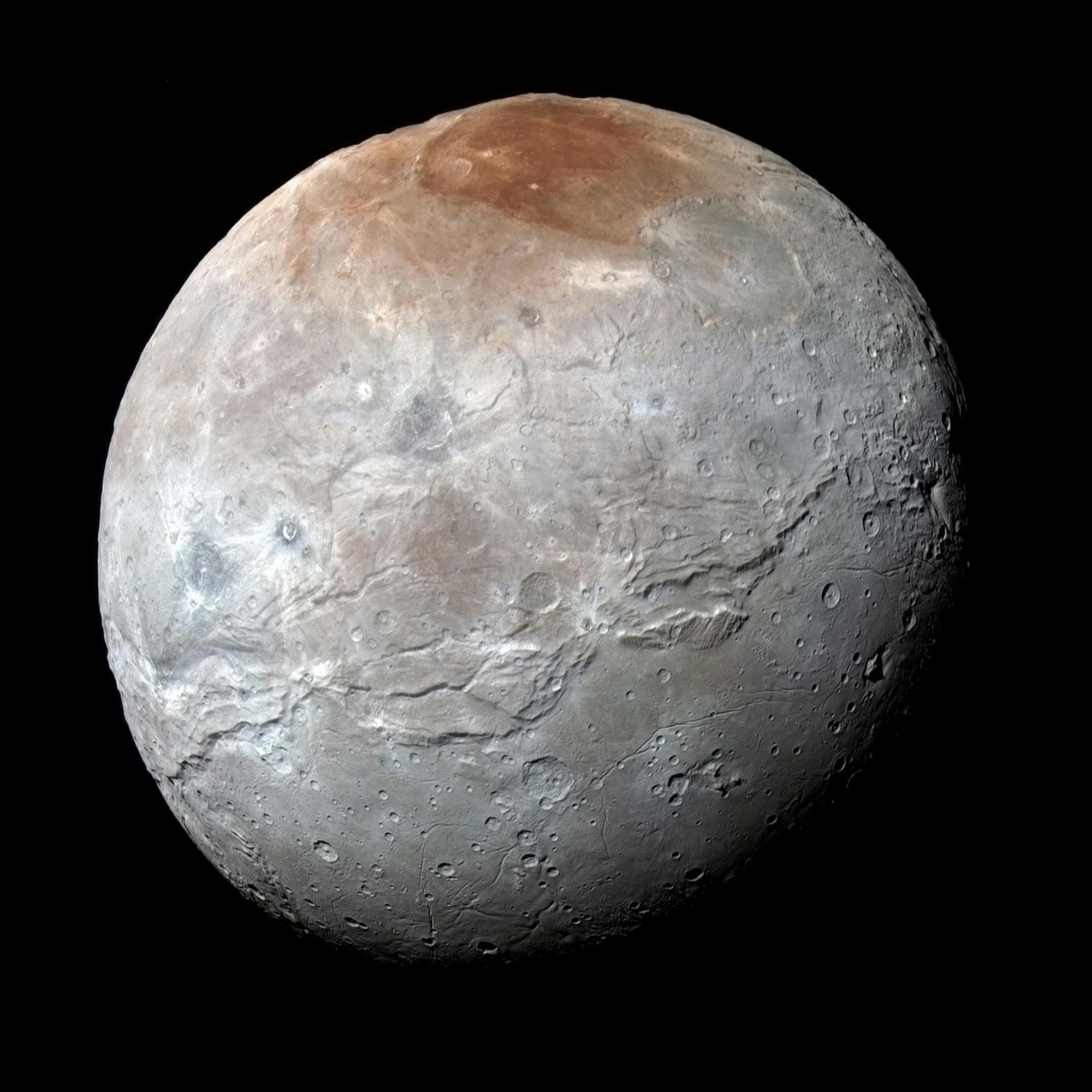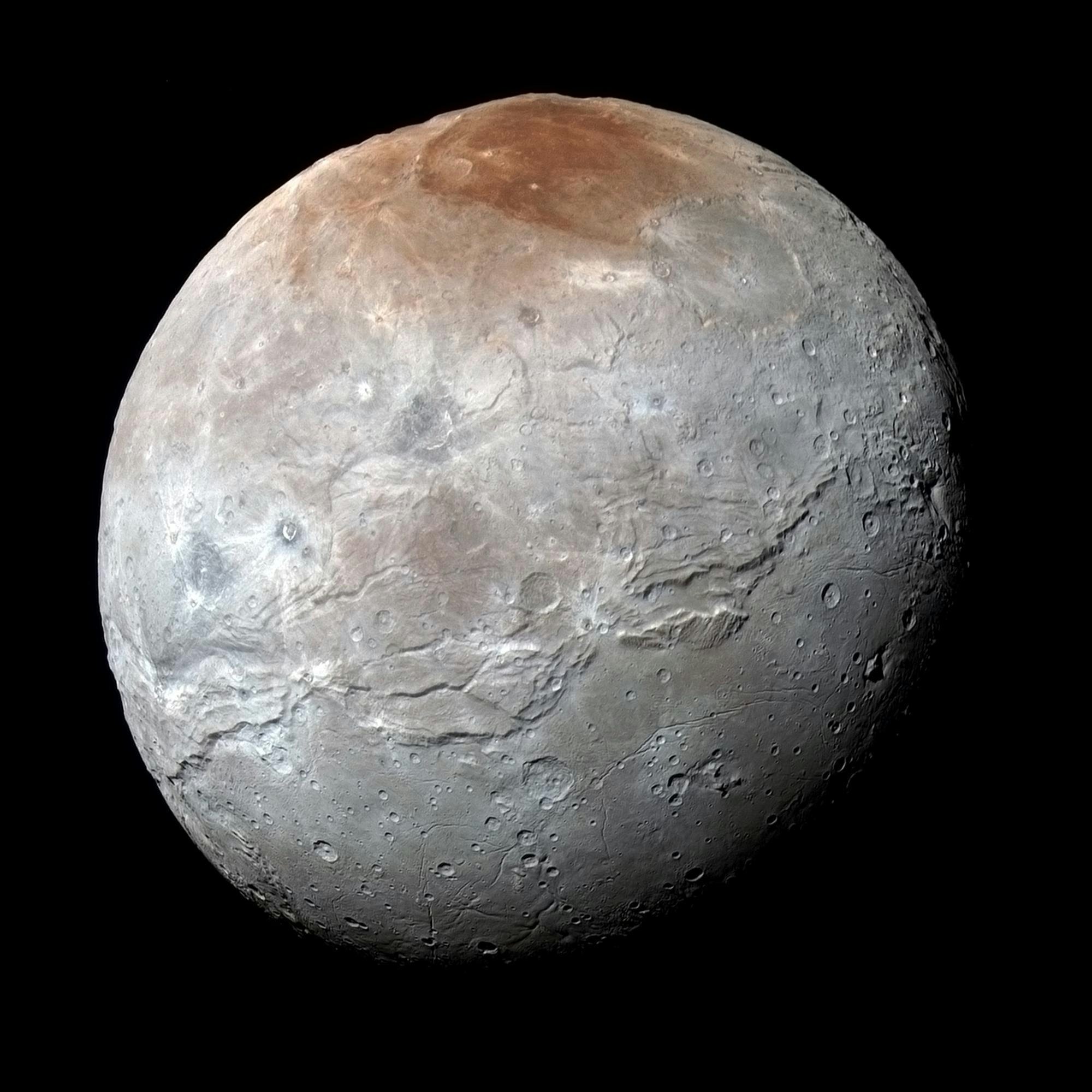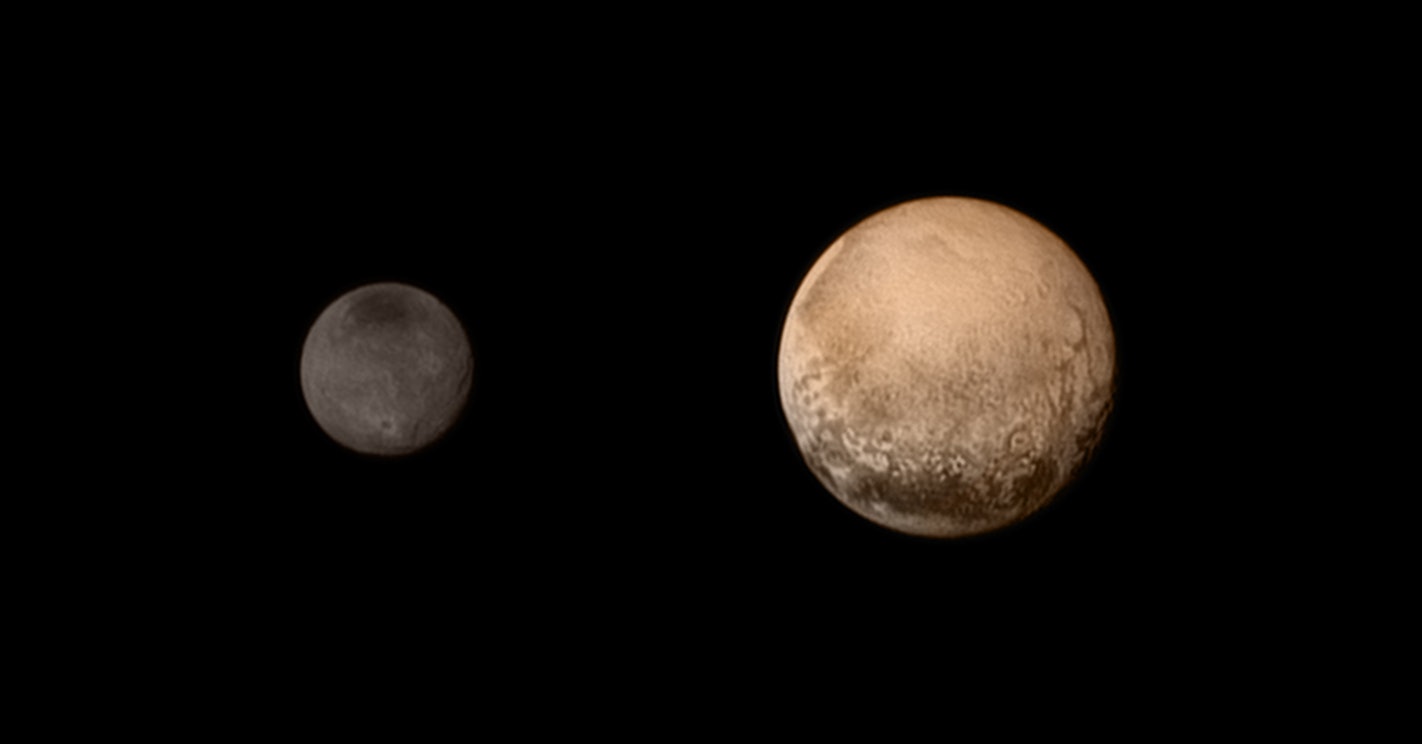
Out in the farther reaches of our Solar System, there sits the icy dwarf planet, Pluto. Seemingly forsaken, it is not alone — as in myth, so in life, Pluto is accompanied by Charon, named after the ferryman of Greek legend whose job was to take the souls of the dead across the river Acheron (or the Styx) to Hades. Fittingly, Charon the moon is besmirched with a murky red color at its north pole reminiscent of dried blood — as if the icy terrain were a frozen battlefield. The region is even named Mordor Macula. But scientists aren’t sure exactly how it got its gory hue. Now, a new theory upends our ideas of what Charon is made up of — and its ties to Pluto.
The Pluto theory — Scientists know that the Mordor Macula’s ruddy color comes from chemical compounds called tholins, which form when radiation breaks down organic chemicals like methane and carbon dioxide. But since the New Horizons spacecraft discovered Mordor Macula in 2015, the mystery has been where the organic material came from in the first place.
The leading theory, so far, blames Pluto. Gases escaping from the dwarf planet’s atmosphere may have drifted toward Charon and accumulated around its surface. When the gas hit Charon’s poles, the frigid temperatures would condense the gas into ice.
But in a new study, Pluto may finally clear its name of this deed. Purdue University planetary scientist Stephanie Menten and her colleagues suggest that ancient cryovolcanoes, which erupted icy slush instead of magma, could be the true culprit.
They published their results in the journal Nature Communications.
What’s New — Menten and her colleagues calculated the amount of methane that could have been vented from Charon’s depths by the same cryovolcanic eruptions that they already knew created the moon’s vast southern ice field of Vulcan Planitia.

In that scenario, “the gas particles will end up hopping across Charon’s surface, and there’s a set of equations that you can use to track, randomly, what will happen to these methane particles,” Menten tells Inverse.
The team modeled the fate of 1,000 individual methane molecules in the hopes of estimating how often any methane vented in Vulcan Planitia might reach either of Charon’s poles. If they made it, according to this scenario, then during winter, the gas would freeze and settle to the ground.
Enough methane could have erupted over the course of the million years Vulcan Planitia formed — and enough of it could have found its way to the cold traps at Charon’s poles to leave a layer of frozen methane nine meters deep over what’s now Mordor Macula. Cosmic rays and solar radiation would have gradually broken down the top layer of methane molecules and converted them into the darker-hued compounds tholins, and thus the region gained its blood-red color.
So their theory goes, anyway.
Here’s the Background — Until about four billion years ago, Charon held a hidden ocean of liquid water laced with ammonia, methane, and traces of other chemicals buried deep beneath its crust. But when the radioactive elements whose decay heated Charon’s interior and kept the ocean liquid ran out sometime between 4 billion and 2 billion years ago, the ocean froze. When water freezes, it expands, and the swelling ice cracked Charon’s crust.
“The ocean that was left, which is probably like a lot less than what was there to begin with, was pretty pressurized [by the expanding ice],” says Menten. “So because it was pressurized, and there were fractures all the way up to the surface. You can have an eruption that happens.”
These eruptions would be akin to Icelandic lava flows on Earth — a slow outpouring of thick, viscous fluid similar to honey from cryovolcanic vents scattered across Charon’s surface. That surge of icy volcanism lasted a million years or more, and when it was finished, 400,000 square kilometers (154,000 square miles) of Charon’s southern hemisphere lay buried beneath a kilometer-thick layer of ice, which we now call Vulcan Planitia.
They calculated that more than 100 billion metric tons of methane, which turns to gas at lower temperatures than water or ammonia, could have burst out of those same vents like bubbles spewing out of a newly-opened soda bottle. And 97 percent of that methane would have reached either the north or south pole.
Of course, that’s assuming Charon’s interior actually contained methane. So far, scientists have no direct evidence of that, other than the tholins in Mordor Macula. But thanks to New Horizons, we know that Pluto’s interior contains methane, and the two small worlds probably formed from the same original batch of material in the early Solar System. (Speaking of which, Menten weighs in on the planet vs. moon debate: “I'm a geologist, by training, so instead of simply planet versus moon, I think of them as worlds.”)
Why It Matters — On Earth and other rocky worlds, volcanism plays an important role in moving volatile organic compounds, like methane and carbon dioxide, from deep inside the planet to the surface. Menten and her colleagues’ findings suggest that the same could be true on the small, icy worlds of the Kuiper Belt. And that could help explain why so many Kuiper Belt worlds seem to have methane, tholins, or both on their surfaces.

“We can tell from telescopic observations from Earth that a lot of them have methane or methane products detected on their surfaces,” says Menten, “but not a lot has been proposed for exactly where the methane comes from.”
Makemake and Sedna, for instance, both have dark reddish surfaces, and studies of their chemical spectra suggest that those surfaces contain methane ice — and neither of them orbits another dwarf planet like Pluto, whose atmosphere could provide methane and other gases.
“It could be that cryovolcanism is a pretty common process on these bodies, and it could be the thing that's actually providing this methane that we're detecting from Earth-based observations,” says Menten. New Horizons, the James Webb Space Telescope, or other future studies of the Kuiper Belt might see smooth, lobe-shaped plains like Vulcan Planitia on other worlds like Makemake and Sedna — evidence of past icy eruptions.
What’s Next — Future observations may also help us understand why Mordor Macula is red and not actually black. Tholins darken over time, so a 2-billion-year-old swath of them should be pitch-black by now. But Mordor Macula is red and so are the surfaces of Makemake and Sedna.
Menten and her colleagues suggest that micrometeorites may steadily wear away the uppermost layer of tholins, revealing fresh red terrain underneath. It’s also possible that, at least on Charon, gas escaping from Pluto’s atmosphere may help refresh the material deposited by the long-ago eruptions. More data on Pluto on Charon or from other worlds with similar icy landscapes, could help solve the mystery.
Meanwhile, Menten and her colleagues want to dig deeper into Charon’s geological past.
“This modeling and geological analysis project was about the last step of what happened [with cryovolcanism] on Charon,” Menten says. “But I think next, what we’re going to be focusing on is what happens internally for Charon, to see exactly how you can generate enough pressure to start actually cracking the surface.”







